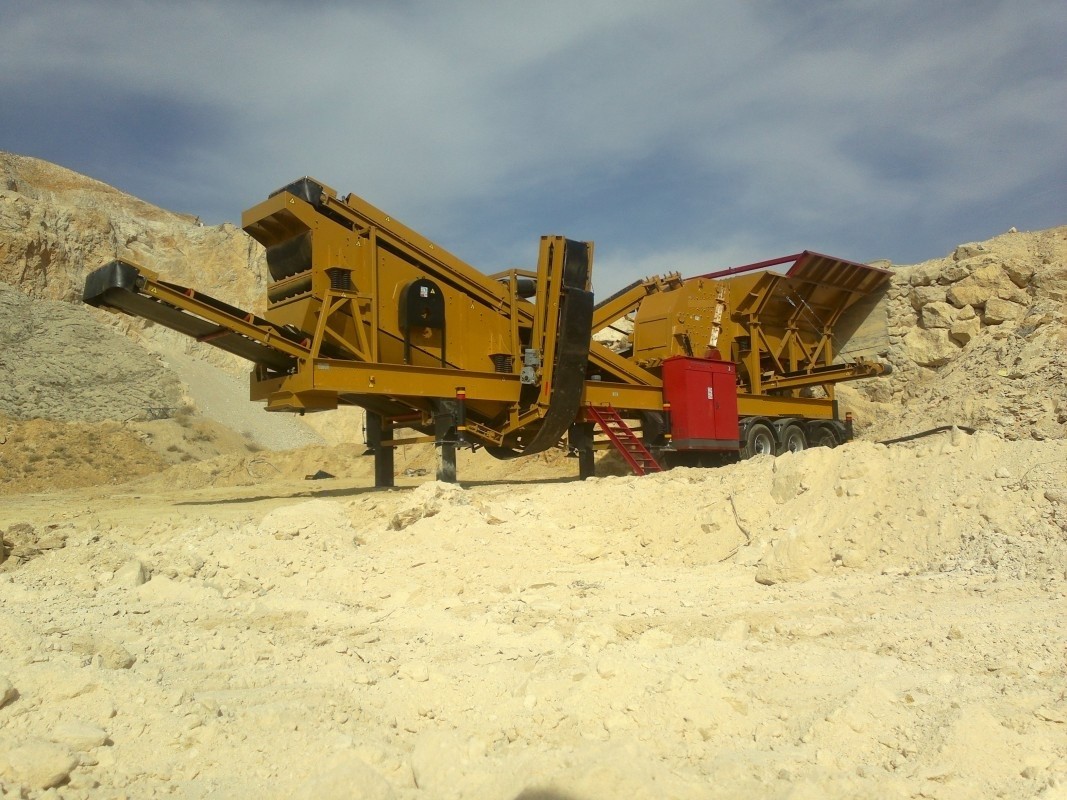Production of Next Generation 150-200 Ton Capacity Mobile Crushing and Screening Plant
Mobile crushing and screening plants have become indispensable in modern construction, mining, and infrastructure industries, enabling efficient on-site processing of rock and mineral materials. Especially with capacities ranging from 150 to 200 tons per hour, next-generation mobile plants offer exceptional efficiency and flexibility. They minimize the setup and operating costs of fixed facilities and provide fast, efficient material handling directly at the project site.
Technical Specifications and Equipment
1. Production Capacity and Configuration
-
Capacity: 150–200 tons/hour
-
Main Configuration: Primary Crusher (Jaw or Impact) + Secondary/Tertiary Crusher (Cone or VSI) + 3-4 Deck Vibrating Screen
-
Feeding Size: Max. 850 mm
-
Motor Power: Total 320–355 kW
-
Generator Requirement: 700–850 kVA
2. Chassis and Transport Design
-
Chassis Structure: Single or double chassis with hydraulic support legs
-
Mobility: Compact size and foldable conveyors for easy setup and transport
-
Weight: Varies between 49 and 80 tons depending on the model
3. Screening and Crushing System
-
Screen Size: Ranges between 1600×5000 mm and 2300×5500 mm
-
Screen Type: 3 or 4-deck vibrating screen
-
Crusher Types:
-
Primary Crusher: Jaw or Impact Crusher
-
Secondary/Tertiary Crusher: Cone or VSI Crusher
-
4. Automation and Control Systems
-
PLC-Based Control: Advanced automation systems for complete process management
-
Remote Access: Remote operation capability via internet
-
User Interface: Touchscreen control panels for intuitive operation
5. Environmental Features
-
Dust Suppression: Water spray systems to reduce dust emissions
-
Low Noise Operation: Designed for quiet performance
-
Energy Efficiency: Low consumption components and energy-saving motors
Areas of Application
-
Construction: Supply of aggregate for roads, bridges, dams, and infrastructure
-
Mining: Processing of hard rock and ore
-
Recycling: Reuse of concrete, asphalt, and demolition waste
-
Quarrying: Production of various sized crushed stones
Advantages
-
High Efficiency: Consistent high production with less downtime
-
Customizability: Adjustable configurations to meet project-specific needs
-
Lower Operating Costs: Reduced energy and maintenance expenses
-
Rapid Setup: Quick deployment and operation on-site
-
Mobility: Easily relocatable between project sites
Environmental Impact and Sustainability
Next-generation mobile plants are developed with eco-friendly design principles. Dust suppression systems and low noise levels minimize their impact on the environment. Moreover, the use of energy-efficient systems contributes to sustainability and ensures compliance with environmental regulations.
Conclusion
With their high productivity, flexibility, and environmental sensitivity, next-generation mobile crushing and screening plants with a 150–200 ton capacity are transforming modern construction and mining practices. They combine the efficiency of fixed plants with the advantages of portability, enabling faster and smarter material processing on-site.
 English
English
 Le français
Le français
 Türkçe
Türkçe

